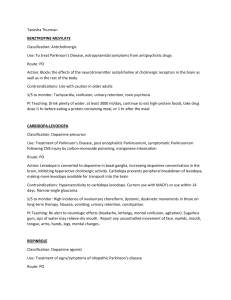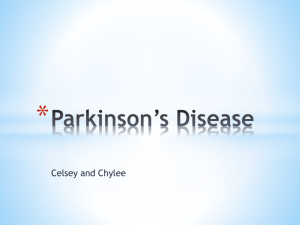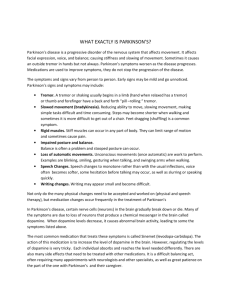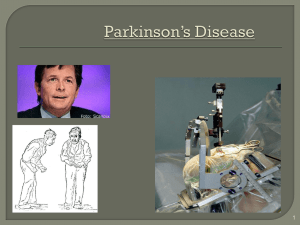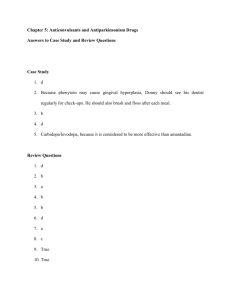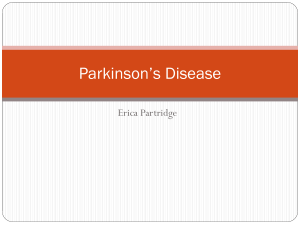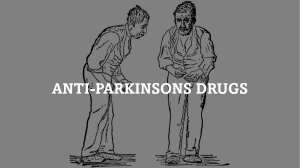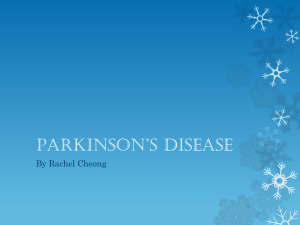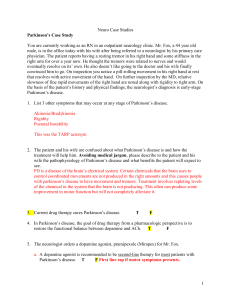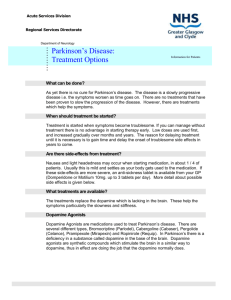The PARticulars of Parkinson's Disease
advertisement
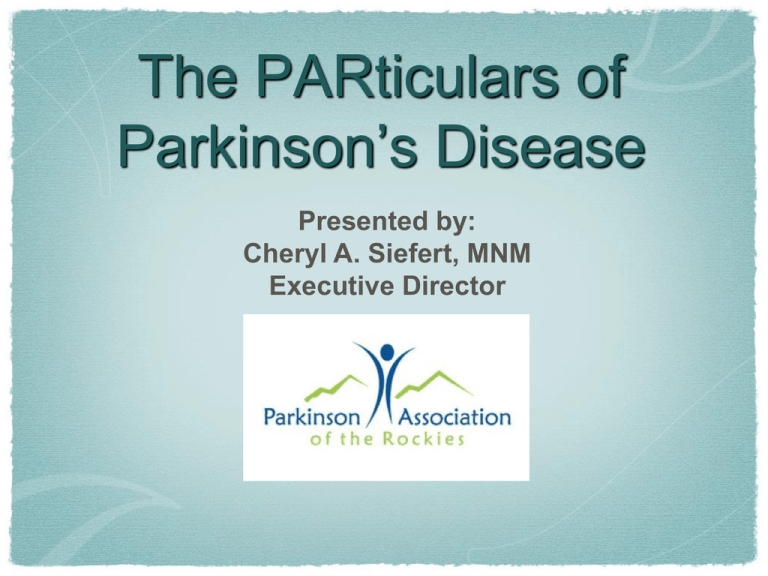
The PARticulars of Parkinson’s Disease Presented by: Cheryl A. Siefert, MNM Executive Director Shaking Palsy James Parkinson described “Shaking Palsy” in 1817 Parkinson’s Disease Progressive neurodegenerative disease Degeneration of dopamine neurons Dopamine Ensures smooth muscle movement 70% is lost before first outward symptom appears Facts - Who Knew? 2nd most common neurodegenerative disorder to Alzheimer’s Affects approximately 1.5 million Americans 17,000 live Colorado Onset between 40 and 70 years Most common within the 60’s 5-10% of patients are under the age of 40 Slightly higher incidence in men Non-discriminatory: Found in any race or ethnic group. No Known Cause Exploring Aging Environmental toxins: Pesticides Rural living Well water Viral Infections Reduced Life Expectancy Mean survival after onset ~ 20 years Longer if dementia isn’t present Longer with L-dopa use Common Causes of Death Pulmonary infection Aspiration Urinary tract infection Pulmonary embolism Complications of falls and fractures Onset Often unilateral with subtle features Resting tremor Loss of arm swing Slowness of movement Symptoms Tremor – trembling in hands, feet, and/or legs at rest Rigidity – stiffness Bradykinesia – slow movement Impaired balance – unsteadiness (not initial symptom) Secondary Signs Cognitive disorders dementia depression psychosis Motor Disorders less frequent blinking swallowing problems speech impairment More Secondary Signs Loss of sense of smell Constipation Urinary issues Lightheadedness Heat intolerance Skin changes Insomnia Daytime sleepiness Sleep apnea Depression/Anxiety Early Treatment To adequately control the symptoms of Parkinson’s disease while minimizing the adverse effects of drug therapy for as long as possible Treatment - Medications Levodopa/Carbidopa – replaces dopamine Dopamine agonists – stimulate dopamine receptors COMT & MAO-B inhibitors – inhibits enzyme that breaks down dopamine Anticholinergic agents On/Off - Language of PD Abrupt and unpredictable changes in motor state “ON” = medications are working to < PD symptoms “OFF” = symptomatic benefits have been lost Complication of Meds Dyskinesia: abnormal, involuntary writhing type movements, wiggly and twisty Increase over time Disabling and difficult to control Levodopa Complimentary Therapies Speech Music Yoga Exercise Massage Accupuncture Exercise Improves mood, energy level, and sleep Improves gait, grip strength, and motor coordination Diet & Nutrition A well-balanced diet (can help prevent constipation) Meals rich in protein may reduce absorption of levodopa Wisdom “As we await the discoveries, we have the human spirit” PAR provides programs and services intended to enhance the quality of life for individuals with Parkinson's disease and their families: In-home visits from the Case Assessment Team No-cost loans of needed medical equipment Participation in support groups and weekly exercise classes Information & Referral Helpline Newsletter/E-news Educational Seminars Lending Library & Educational Literature www.ParkinsonRockies.org
